|
Maybe your business is looking at expanding, which may require building a new warehouse, factory, process facility, or even a mine. Where to start, what are the pitfalls, how much will it cost, will it be completed on time? Unfortunately many construction projects go wrong because they are badly planned and poorly thought through. White elephant construction projects Those embarking on a new construction project must do thorough planning before starting the project. Whether you are simply looking at building a new house or renovating your current home, or embarking on a more ambitious project like developing property to sell or lease, or perhaps a new venture to expand your business, no matter the scale of the construction project good planning before starting the project is essential. #constructionprojectmanagement #constructionprojects "Pre-construction is a critical phase in every building project" Pre-construction is a critical phase in every building project as it involves planning, analyzing, budgeting, and establishing the anticipated needs and potential issues in your upcoming project. Quality pre-construction planning can help the owner decide if the completion of the project is within their budget and if it's feasible for their current space. During pre-construction, there are various things to consider to ensure a smooth workflow during construction. Here is your complete construction checklist to help you create an effective pre-construction plan before breaking ground. Plan a Realistic Project BudgetConstructing a new building may seem exciting, but make sure you don't go over your head. Instead, focus on setting a realistic budget with the help of your finance team or project manager. If you don't have a team to assist you, make sure you spend time allocating, calculating, and reviewing your intended budget. For your reference, here are the expenses that you need to include on your budget list:
While setting the budget, you also need to communicate directly with your contractor, engineer, architect, design consultants, and business stakeholders to include all necessary items in the budget. Ask your team for suggestions to facilitate the project and correctly add those to the expenditure. In addition, you also need to make space for unexpected costs to prevent delays. Although you may have a concise budget list now, you can never go wrong with being prepared for potential issues. You can also ask your team for reliable material suppliers to get the best deals. Acquire Building PermitsOnce you have determined the site for your new commercial building, you need to obtain zoning permits. The local zoning requirements refer to the type of structures you can build on the land. These codes essentially dictate the form and make of any building in a particular location. After receiving the zoning permit, you can now apply for a building permit. This permit regulates a structure's features, safety, and environmental impact on the surrounding area. Depending on the scale of the construction project, you may also need additional permits for fire safety, plumbing, electricity, and even the elevator. Applying for permits may be time-consuming, but it is a crucial process in the first stages of construction. When you apply for one, inspectors will come and inspect the site to ensure that everything is up to code and safe before proceeding with the project. Set a Project TimelineSet up a meeting with your team and business partners to determine the starting and completion date. Since construction requires funding, it is necessary to establish a completion timeline with several milestones to track progress. Will your construction project be completed on schedule? Read this The construction resources you reqire will also depend on how fast you finish construction. Inform your project manager of whether you need things done more quickly so that they can give you a realistic date without sacrificing quality. Factor in unexpected delays due to weather, labor issues, material shortage, shipment delay, and more. project scheduling - the relationship between time and cost Request Bids from ContractorsThe next step would be to request at least three construction companies to send out their proposed bids. To receive a compatible offer, it would help if you provided necessary details about the project, such as the target budget, location, and blueprint. If you don't have the blueprint yet, you can inform them of your design ideas so that their architect can also suggest a layout based on your goals. If you plan on building a large-scale structure and want to maximize all possible options, then you can publicly post your bidding request so that any contractor can send out their bids. However, if you're going to streamline the process or if you're in a hurry, you can put out a closed request to a select group of contractors. Once you have all the bids, here are three selection methods to help you choose the best company for the job Checking contractors' prices:
In addition to these selection methods, it is also necessary to hire a licensed and insured construction company. Choose a company that offers both since it shows their confidence and accountability. They also need to have workers' compensation as it is also a good indicator that you're doing business with the right people. After selecting the company that will take care of your future assembly, you can now finalize the budget, permits, and project timeline in a meeting with your new contractor and the rest of the team. Why owners sometimes employ the wrong contractor Secure Safety Measures and SystemsNow that you're in the last stages of the pre-construction process, the next step is to ensure workplace safety. Although safety is an essential aspect of construction, there are still several instances wherein the owner and even workers overlook safety protocols. Why should we take construction safety seriously? Construction work is a dangerous profession. It is the employer's responsibility to implement various measures to minimize risks, such as safety training, equipment, and adhering to these regulations:
Establishing safety on site is beneficial not only for the workers but your business as well. The immediate consequence of accidents resulting from neglect has to pay for unexpected costs due to the injury and hefty fines from the Occupational Safety and Health Administration (OSHA). Create a risk management plan with your team by listing down possible risks involved in the project. 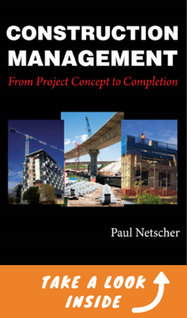 "Packed with invaluable tips, insights and advice, Construction Management from Project Concept to Completion is an easy to read project management book that explores the complete construction project lifecycle: from project inception, where the owner decides what they want, where they want it through project execution to completion. Ensure your project is a success." Procurement ManagementProcurement involves acquiring the materials and services required in construction projects to ensure completion. Ordering the correct quantity of construction materials Here are the steps involved in procurement management:
Procurement is a crucial phase in pre-construction as there will be instances when you need to purchase, rent, or acquire external resources to accomplish project goals. Before requesting external help, make sure that you have weighed the pros and cons of producing the goods or services from the team. Making an informed decision is crucial so that you can proceed with confidence. Ready for a successful construction projectAlthough construction will take time, patience, and money to complete, you can help guarantee the project's success by following these pre-planning guidelines. Beginning the building phase with an appropriate budget, accurate scheduling, and establishing a refined set of goals is critical for successful project completion. How clients accidentally sabotage construction projects, and how you can stop it AuthorChris Jackson is an experienced Business Development Manager with a demonstrated history of working in the construction industry. He is currently employed by Best Access Doors, an access door supplier in the US and Canada, and has been working for the company for more than 12 years now. His area of expertise is on Negotiation, Roofers, Sales, Project Estimation, and Facility Management (FM) Do you want to learn how to manage construction projects successfully"A practical and really helpful guide to navigating the myriad of things to think about when managing a construction project." Reader review on Amazon Paul Netscher has written several easy to read books for owners, contractors, construction managers, construction supervisors and foremen. They cover all aspects of construction management and are filled with tips and insights.
Visit to read more. The books are available in paper and ebook from most online stores including Amazon.
4 Comments
Construction management refers to the process of managing building projects. It involves streamlining the various stages of development and ensuring that all workers, teams, and equipment are functional and collaborative. The need for structure and coordination paved the way for project managers to have a crucial role in the industry. "The construction manager must interact with various professionals from different skill" While project management primarily deals with managing resources, costs, and quality, the role of the project manager extends beyond leadership and control. While project management primarily deals with managing resources, costs, and quality, the role of the project manager extends beyond leadership and control. The manager must interact with various professionals from different skill areas, such as engineers, architects, designers, public works, and city planning. from different skill areas, such as engineers, architects, designers, public works, and city planning. the importance of good communication on projects Sectors of Construction To better understand project management, it would help identify the various construction industry sectors. Below are the four types of building projects:
Despite the type and scale of the project, you still need to implement construction management to ensure safety and mobility on-site. The Role of a Project ManagerProject managers are among the busiest people on construction sites since their tasks and responsibilities encompass the various stages of development. Their main goal is to proceed according to the finalized plan. They need to manage the entire project to ensure successful completion within the agreed budget and schedule. Here are some of the duties of a construction project manager:
Due to their level of authority and accountability, here are the skills that a project manager should have are:
"Construction management is a challenging task" Construction management is a challenging task that demands knowledge and expertise in various aspects of construction. However, their role is vital in the industry as any stage in the construction project can easily be in disarray if not managed correctly. What qualities does a good construction project manager require? Construction Management Bidding ProcessDepending on the number of contractors pricing the construction project, the construction bidding process can be long and challenging. However, most construction projects follow the design-bid-build process wherein the owner provides the blueprints or drawings and selects the contractor through a bidding or quotation process. The contractors would then offer their bid or price, including statement of work (SOW) details, cost estimation, payment terms, etc. The project owner may also issue either of these two types of bids:
Once the owner receives all the bids, they can choose the best offer by employing any of these effective selection methods:
Once the project owner chooses the best contractor for the job, they will review and sign the contract and determine the payment method. Why owners sometimes employ the wrong contractor Construction Project Management ProcessesProject management requires various skills and the ability to coordinate with diverse agencies and people to lead the construction project from concept to build successfully. It would help adhere to these essential construction management principles during every project phase.
Construction managers play a critical role on construction projectsProject managers play a significant role in the construction industry as they are responsible for maintaining the intended budget, ensuring productivity and quality, and creating a safe working environment. Although there could be multiple issues on the construction site, a professional project manager would have an effective risk management plan to implement and get the project back on track. Aside from risk management, continuous communication between all teams is also vital to successful completion. 10 Commandments for Construction Project Managers Do you want to learn how to manage construction projects successfully"I found that referring to this book was like having my own mentor on tap. Excellent." (Reader Amazon) Paul Netscher has written several easy to read books for owners, contractors, construction managers, construction supervisors and foremen. They cover all aspects of construction management and are filled with tips and insights. Visit to read more. The books are available in paper and ebook from most online stores including Amazon. AuthorChris Jackson is an experienced Business Development Manager with a demonstrated history of working in the construction industry. He is currently employed by Best Access Doors, an access door supplier in the US and Canada, and has been working for the company for more than 12 years now. His area of expertise is on Negotiation, Roofers, Sales, Project Estimation, and Facility Management (FM) Commercial buildings account for a large percentage of the overall carbon emissions in the world. Due to this alarming statistic, building or retrofitting structures in line with green initiatives and transitioning to a sustainable building method are logical solutions to reduce C02 emissions. "The purpose of green buildings is to reduce the occupants' reliance on artificial devices and maximize the use of the natural resources surrounding the structure." The purpose of green buildings is to reduce the occupants' reliance on artificial devices and maximize the use of the natural resources surrounding the structure. If you are interested in creating or renovating your existing building to become more sustainable, here are some vital considerations for green building design. Steps to making your building green1. Orientation of the Building Building orientation is the process of facing a structure in a certain way to maximize various aspects of its surroundings, such as the warmth of the sun, curb appeal, wind patterns, and drainage system. With rising energy costs, it is an effective passive technique to capitalize on natural energy while maintaining thermal comfort. Below are some tips to maximize natural heat gain through orientation:
For instances where kerb appeal and lot dimensions hinder your builder's ability to orient your space, you can still achieve efficiency by employing energy-saving features, insulation, and cool roofs. 2. Solar Shading Solar shading and control directly impact the efficiency of your commercial building. Also called daylighting, solar shading involves using specific technologies to combat glare and reduce heat gain without preventing natural light. The process reduces your reliance on artificial lighting and HVAC systems. In a nutshell, solar shading eliminates direct heat and sunlight to help keep a space cool and efficient. Here are the two types of solar shading to help you decide which method is best for your building:
In addition, by reducing heat gain, solar shades can help reduce the need for air conditioning systems. When used in conjunction with other passive methods such as night cooling, it also has the potential to eliminate your need for HVAC devices, depending on your location. 3. Choice of Building Material Choosing sustainable materials is also a practical option for green buildings. Material selection during construction is crucial to determine your building's impact on the environment. For instance, it would be best to choose locally sourced sustainable materials as it can also help minimize transportation costs and help the community. Here are some examples of recycled building materials:
Recycled materials can also help reduce landfills and the need for non-biodegradable products. A perfect example of recyclability is metal roofs since they primarily consist of recycled metal sheets. You can also choose a lighter roofing shade for your commercial roof to lower heat gain and install energy-efficient flat-panel skylights for natural illumination. 4. Building Envelope The building envelope is also a critical component in your commercial space as it divides the interior and exterior parts. The primary functions of building envelopes include security, shelter, solar and thermal control, moisture control, indoor air quality, and daylight access, to name a few. The builder can also build the envelope differently depending on the location. For instance, a loose envelope allows airflow throughout the building. Meanwhile, a tight envelope controls the in and out airflow of the structure. 5. Window-wall Ratio (WWR) The window-wall ratio is a crucial energy-saving design that can affect your building's energy consumption. The WWR refers to the portion of an exterior wall that consists of windows and is a significant value in determining a structure's energy performance. Since windows can cause twice the energy loss compared to a wall, they can impact your existing HVAC system. Therefore, the size and number of your windows should depend on the climatic conditions in your area. Aside from shading, you can purchase windows with superior glazing systems and lower heat gain to reduce heat and glare. 6. Structural Design The commercial building and construction industry is accountable for the largest raw materials consumed in various applications. Combined with the continuing growth of the population, it is necessary to find alternatives and solutions to reduce resource depletion. Here are some of the ways of material efficiency:
Proper management and usage of construction materials is a significant concern in every building project. It is crucial to employ effective techniques to ensure material efficiency and resource conservation. 7. Smart Lighting Lighting accounts for up to 20% of a building's total energy usage worldwide. Proper and adequate lighting affects occupant health, comfort, and productivity, so you need to implement efficient lighting solutions for your building. The best way to establish sustainability in your business is to allow as much natural light as possible. Daylighting helps reduce lighting costs, but it is also beneficial to your employees. If natural illumination is not enough, you can use CFL or LED lights to minimize consumption and heat pollution. 8. Water Conservation Water regulation and quality are some of the fundamental objectives of a green building. Please pay close attention to your plumbing system since it primarily deals with water distribution and disposal. Start by regularly maintaining the pipes and installing water-conserving fixtures to reduce water loss. You can also practice rainwater collection and use it for toilets and landscaping. Install an efficient drainage system and harvesting canisters to practice recycling water. 9. Energy Usage Although fossil fuels paved the way for generating electricity in homes and factories in the past, they are responsible for global warming due to the trapped heat. Thankfully, we have found alternative power sources such as solar heaters, solar panels, natural ventilation, and daylighting. By implementing an intelligent approach toward energy consumption, we can hopefully eliminate the need for fossil fuels. "reduce, reuse, and recycle" 10. Waste Management Responsible waste management involves strategically placing waste disposal boxes and garbage chutes. You can help reduce landfill waste by strictly implementing reduce, reuse, and recycle practices inside your commercial building. To achieve this, you need proper planning to dedicate certain areas inside the facility for waste management. Segregate waste and employ effective wastewater collection systems that will go hand in hand with your plumbing lines. Good green building design will save moneyGreen buildings are the key to reducing the energy and emissions rate of the construction industry. The term refers to the zero-impact construction of commercial and residential structures, which involves using sustainable materials and improved efficiency. Ultimately, the application of efficient practices is highly beneficial for your business. You stand to gain reduced operational and power costs, shorter investment returns, and increased asset value as more people choose to become sustainable. Creating healthy spaces for your employees or occupants is undeniably crucial to the success of your commercial structure. AuthorChris Jackson is an experienced Business Development Manager with a demonstrated history of working in the construction industry. He is currently employed by Best Access Doors, an access door supplier in the US and Canada, and has been working for the company for more than 12 years now. His area of expertise is on Negotiation, Roofers, Sales, Project Estimation, and Facility Management (FM)
|
Archives
June 2024
Note: We welcome genuine comments, especially comments that add additional information to the subject matter in the article. We however reserve the right to remove inappropriate comments, which includes comments that have nothing to do with the subject, comments that include inappropriate language, and comments that are an advertisement for a product or company, or which include an advertising link. Comments must be in English. We will not enter into discussion on why a particular comment was removed.
CategoriesCopyright 2016 - The attached articles cannot be reproduced for commercial purposes without the consent of the author.
The opinions expressed in the attached articles are those of the writer. It should be noted that projects are varied and different laws and restrictions apply which depend on the location of the contractor and the project. It's important that the reader uses the supplied information taking cognisance of their particular circumstances. The writer assumes no responsibility or liability for any loss of any kind arising from the reader using the information or advice contained herein. "I have what I consider some of the best books on construction management."
Books are available from: Amazon.com Amazon.co.uk takealot.com kalahari.com Amazon.in Amazon.de Amazon.fr Amazon.it Amazon.com.au Powell's Fishpond uread bokus Amazon.ca Amazon.es Other retail stores Available in paperback or on Kindle "28 YEARS OF CONSTRUCTION PROJECT MANAGEMENT EXPERIENCE, DEVELOPING SUCCESSFUL CONSTRUCTION PROJECT MANAGERS AND BUILDING SUCCESSFUL CONSTRUCTION COMPANIES"
|


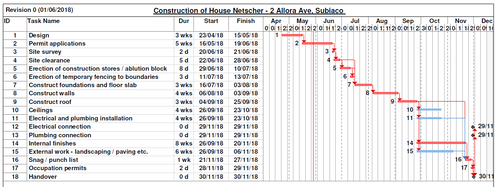
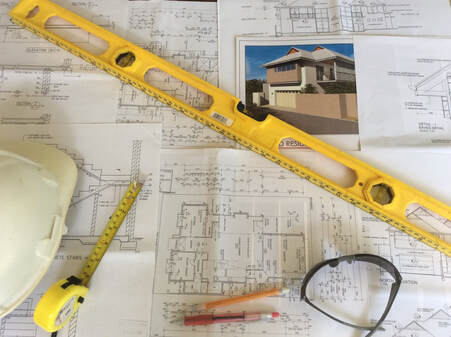
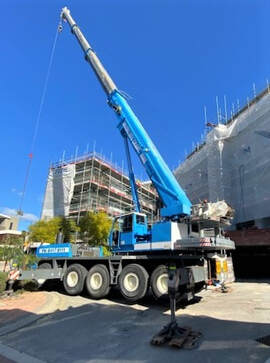
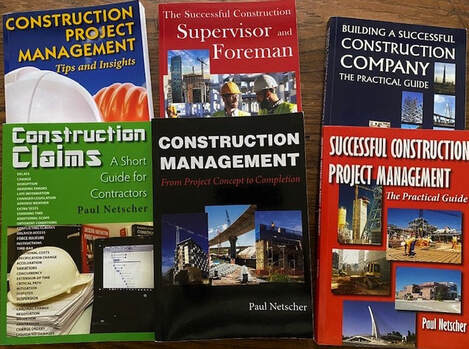
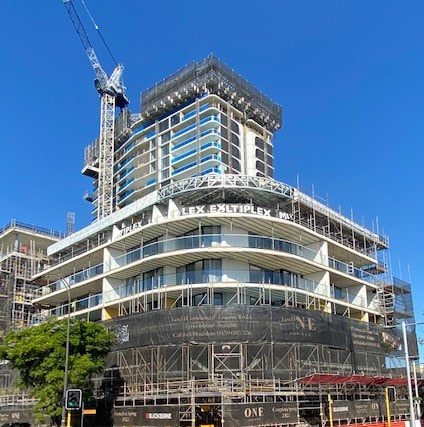



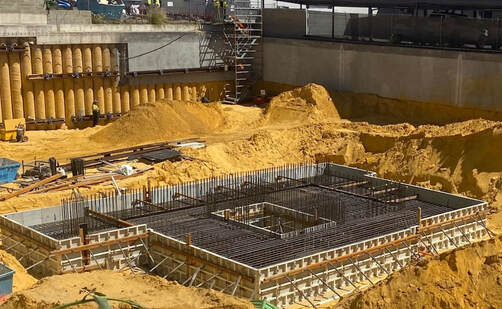



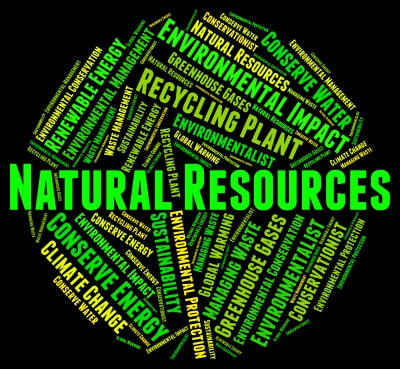
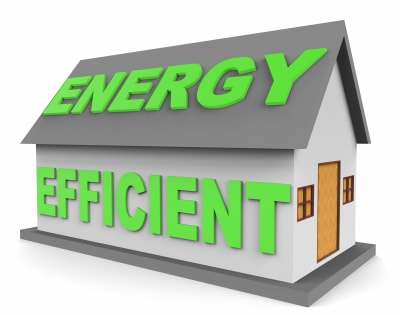
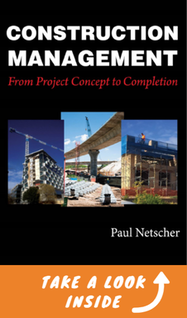



 RSS Feed
RSS Feed




